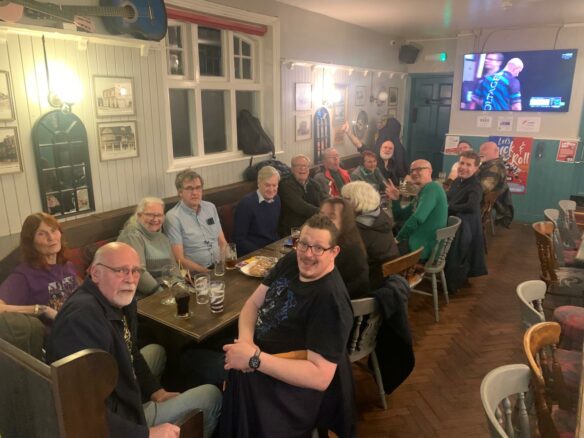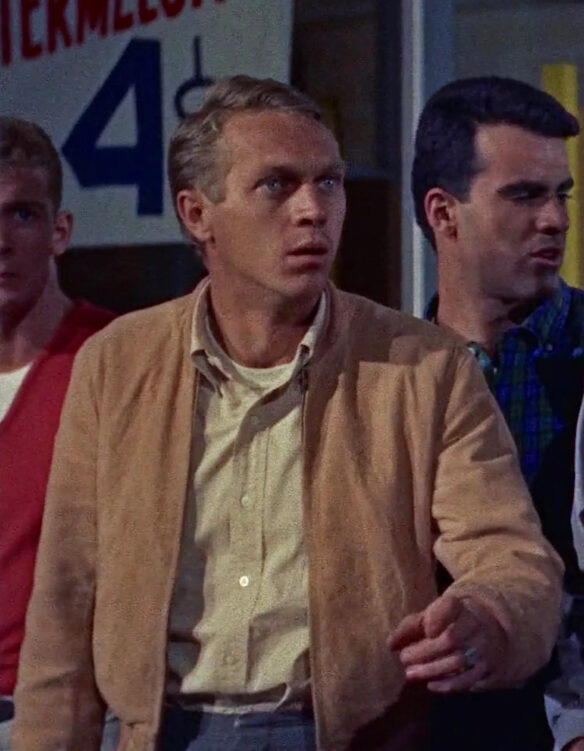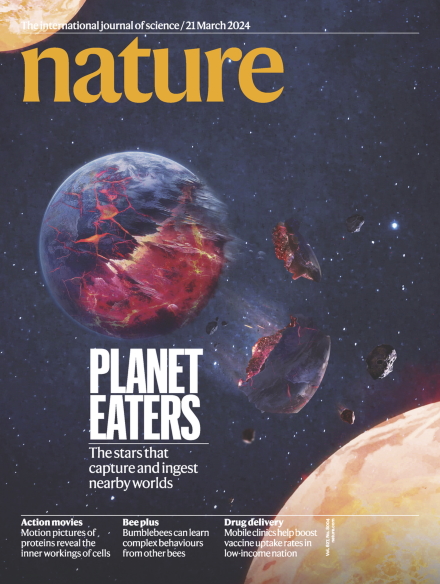(1) CONGRATULATIONS ON EPISODE 250! Scott Edelman invites listeners to rip into roti with writer Tim Paggi in the impressive milestone Episode 250 of the Eating the Fantastic podcast.

My guest for the 250th episode of Eating the Fantastic is playwright, poet, and fiction writer Tim Paggi, whom I met at December’s Charm City Spec event where he read an excerpt from his recently published novella How to Kill Friends and Eviscerate People. His poetry chapbook “Workforced” won the 2015 Plork “Play/Work” Award for Creative Writing and Publication Arts. His next book, The Other Side of the Hallway, will be released later this year. He holds an MFA from the University of Baltimore. Additionally, for the past 15 years, he’s been giving ghost tours around the neighborhoods of Fells Point and Mt. Vernon.
We discussed the story behind his X-Files-inspired juvenilia, the reason he demanded a refund from Barnes & Noble for a volume of Emily Dickinson’s poetry, why a writing teacher (wrongfully) accused him of plagiarism, how the beginning of the pandemic was also the beginning of his fiction writing career, whether his recent Cthulhu references were intentional or unavoidable, why the Severance TV show has him feeling anxious (it’s probably not the reason you think), the C-word he avoids using in his fiction, whether facing down audiences on stage helped him deal with rejections on the page, the many reasons he loves cosmic horror, the drunkest group he ever led through Baltimore on a ghost tour, and much more.
(2) OPT-IN OR OPT-OUT OF SCRAPING? The UK’s Society of Authors received over 1,000 responses to their survey of members and authors on the Government’s proposal to change copyright law as part of its consultation on Copyright and AI, and “96% of authors surveyed believe an opt-out system would negatively impact the creative industries”. “SoA report into authors’ views on the AI and Copyright consultation”.
The survey focused on authors’ views on the key topics covered by the Government’s consultation on Copyright and AI, including: (i) a proposal to introduce a text and data mining (TDM) exception into copyright law, which would allow tech companies to use copyright-protected works without permission, unless the author had explicitly opted out; (ii) transparency, labelling and enforcement measures, and (iii) AI in education.
The government proposed that, rather than having the right to opt in to allowing your work to be exploited by machine learning (the current situation), you would be presumed to have agreed unless you actively opted out. On this question, 96% of respondents believed this would have a negative impact on the creative industries with 91% reporting that they have no experience with opting out; and 82% saying that opting out each of their individual copyright-protected works would negatively impact their business.
In the comments provided by authors:
- An overwhelming majority expressed their strong opposition to an opt-out system, calling instead for the current opt-in system to be upheld. Many made the point that our industry has been relying on a permission-based system successfully for decades and it would be hugely unfair to change that for the benefit of one sector.
- Many respondents helpfully elaborated on the various ways in which opting out simply does not work. For example, robot.txt can be circumvented or ignored, there is no way for authors to know when they need to opt out, and it is technically impossible to remove scraped material from a system, even if the option to opt-out is exercised.
- Respondents repeatedly raised the same concerns about the damaging impact the government’s policy proposal would have on creators’ livelihoods in the long term, on industry diversity and representation, and the devaluation of the creative work.
58% of respondents were concerned that preventing their website being ‘crawled’ or ‘scraped’ for machine learning by opting out could negatively affect their discoverability online. There was particular concern here from illustrators who use their website and social media to showcase their work but now feel that the risks outweigh the benefits.
(3) ANIME GOES UNDER THE HAMMER. “Studio Ghibli and Anime Icons Power Heritage’s Record-Setting $1.49 Million Art of Anime: Vol. VI” reports Heritage Auctions.

Leading the charge was an electrifying lineup of Studio Ghibli masterpieces, headlined by a rare production cel of the elusive “Senior Witch” from Kiki’s Delivery Service, which cast a spell at $48,000 — one of the highest totals ever realized for the 1989 film. Another Kiki standout, a charming Key Master setup of the title character peering into a brick oven, fired up at $16,000. Beloved Ghibli titles like Castle in the Sky, Princess Mononoke, Porco Rosso and Grave of the Fireflies excelled over the course of the event, and not surprisingly, a significant production cel featuring the beloved Catbus from the final moments of My Neighbor Totoro trundled away for $13,000….
…Beyond Ghibli, the auction was packed with legendary titles that flexed their muscle across the bidding floor. Berserk claimed the highest price in the sale with a staggering $85,000 for a harmony cel setup created by master art director Shichiro Kobayashi. The cel, an atmospheric piece originally created for a home video release, stands as one of the most important Berserk artworks ever sold at auction — a fitting tribute to the late Kentaro Miura’s dark fantasy epic.
Akira, the cyberpunk juggernaut that helped bring anime into global consciousness, made a bold showing with two rare production backgrounds of Neo-Tokyo’s dystopian skyline, which sold for $11,000 and $8,500. Macross fans powered fierce bidding on original concept art, including Shoji Kawamori’s VF-1J Valkyrie ($18,000) and Haruhiko Mikimoto’s character concept of protagonist Hikaru Ichijyo ($11,000)….
(4) HOW THEY COMPLETED THE MISSION. The Museum of the Moving Image in Astoria, NY will host an exhibit on stunt work in “MISSION: IMPOSSIBLE—Story and Spectacle” beginning April 18.
Variety has more details: “’Mission: Impossible’ Exhibition Coming to Museum of Moving Image”.
Museum of the Moving Image (MoMI) will launch a major initiative celebrating the “Mission: Impossible” franchise on April 18. The exhibition will spotlight star and producer Tom Cruise’s commitment to practical stunt work (think clinging to the face of the Burj Khalifa, as well as to the sides of various planes, trains and automobiles), and explore how the series combines technical ingenuity in service of storytelling, character development and performance. It opens ahead of the Memorial Day Weekend release of the eighth film in the series, “Mission: Impossible – The Final Reckoning.”
Sections of the exhibition, entitled “Mission: Impossible — Story and Spectacle,” will be devoted to each film in the series, with a focus on that film’s key stunt or action sequence, along with unique behind-the-scenes content that offers insight on how the death-defying stunts were prepared for and filmed, complemented by related production artifacts. Paramount Pictures produces the films.
(5) WATERSTONE’S PRIZE. [Item by Steven French.] A book inspired by a game the author’s family played during lockdown has won this year’s Waterstones children’s book prize reports the Guardian. “The Cafe at the Edge of the Woods wins Waterstones children’s book prize”
The Cafe at the Edge of the Woods by Mikey Please was announced as the winner of the £5,000 award, voted on by Waterstones booksellers, at a ceremony on Thursday evening.
The book tells the story of Rene, who opens a cafe beside an enchanted wood and prepares to serve the finest cuisine with the help of a waiter, Glumfoot, only to discover that the locals have a very odd palette, favouring disgusting foods.
“The story grew from a game my wife, son and I would play during lockdown”, said Please. His wife, Jess, would pretend to be a “pompous chef”, his son, Axel, would play the “downtrodden waiter”, while Please himself would act the part of a demanding customer.
“The dynamic of these three characters was so rich, the setting so loaded with potential, and the opportunity to showcase my long-practised and long-underappreciated art of rearranging food to look funny, made the story impossible to resist”, said Please.
Please is a writer, animator and illustrator whose works include the 2011 stop motion animated film The Eagleman Stag, which won a Bafta for best short animation. His debut novel, The Expanded Earth, will be published 3 April.
(6) BECOMING MEDIA SAVVY. Gideon P. Smith tells SFWA Blog readers about “Successfully Talking to the Press About Your Art: Plot It, Don’t Pants It!”
…Their questions will likely be very generic if they haven’t read your work, which results in uninteresting copy. There are two ways to combat this:
- Create a playbook of answers to generic questions. These answers should be concise but add something unique about your work. You can predict generic questions by considering what anyone who hadn’t read something might ask. (e.g. “What is the book about?” “What was your inspiration?”) or by reviewing prior interviews.
- However, the better way to help them create a strong story is to suggest questions. This may sound counterintuitive given they are the interviewer, but you are the expert—on yourself, your work, and your story. You know what makes your book unique, whether it’s an unusual magic system, scientific influence, or personal connection. Most journalists will appreciate your taking a proactive approach if you highlight what’s unique or provide interesting angles. It makes their job easier.
Your playbook should help readers quickly identify your book’s genre and subgenre, then draw them in with an intriguing hook. Make it personal—within your comfort zone—so readers connect with you and your work. Finally, ensure the interview ends with clear information on where to find you and your work (social media, website, book links)…
(7) MORE ON BBC RADIO 4. [Item by SF Concatenation’s Jonathan Cowie.] As it happened, got home and yesterday afternoon BBC Radio 4’s Feedback programme had an item on this. “Announcement of the end of an era on Radio 4.” Ex pat Brits were fairly pissed off, as were those in the Republic of Ireland who like to listen to the BBC. It looks like some final decisions have to be made.
Andrea Catherwood shares exclusive news of the end of a long-running Radio 4 programme. Frequent contributors and the programme’s commissioning editor give their thoughts on the well-known brand as it nears its final episode.
BBC Sounds is soon to become unavailable outside of the UK. Listeners from all over the world have been in touch to voice their disappointment about the changes, and we’ve heard in particular from people in the Republic of Ireland who tune into BBC Radio content from north of the border. Will the geo-blocking cause unintended political ramifications? Andrea discusses the issue with Shane Harrison, former BBC correspondent in Dublin.
(8) IT’S ALL ABOUT ME. McSweeney’s Internet Tendency teaches everyone how to be a staggering bore in “The Art of Asking a Question to a Literary Festival Panel”.
The key to asking a successful question at a literary festival panel is preparation. You’ll want to have every detail of the preface to your question prepared, such as your name, age, and entire medical history. Don’t worry about the actual question; you can make that up as you go along….
(9) TODAY’S DAY.

(10) TODAY’S BIRTHDAY.
[Written by Cat Eldridge.]
March 28, 1912 — A. Bertram Chandler. (Died 1984.)
A. Bertram Chandler, my favorite Australian writer.
Did you ever hear of space opera? Of course you have. Well, the universe of Chandler’s character John Grimes is such. A very good place to start is the Baen Books omnibus of To The Galactic Rim which contains three novels and seven stories. If there’s a counterpart to him, it’d be I think Dominic Flandry who appeared in Anderson’s Technic History series. (My opinion, yours may differ.) Oh, and I’ve revisited both to see if the Suck Fairy had dropped by. She hadn’t. If fact she likes him a lot. Good girl.

Connected to the Grimes stories are the Rim World works of which The Deep Reaches of Space is the prime work. The main story is set in an earlier period of the same future timeline as Grimes, a period in which ships are the magnetic Gaussjammers, recalled with some nostalgia in Grimes’ time. They don’t say what happened to them.
But that’s hardly all that he wrote. I remember fondly The Alternate Martians, a novella that he did. A space expedition to Mars that find themselves in the worlds of H.G. Wells, Edgar Rice Burroughs and Otis Adelbert Kline. Why he chose the latter I know not as I’d never heard of him. It’s a great story well told. And fun to boot. It was first published as an Ace Double, The Alternate Martians / Empress of Outer Space. Gateway has released it as a separate epub for a mere buck ninety nine at the usual suspects.
He wrote a reasonably large number of stand-alone-alones, so what did I like? For a bit of nicely done horror, you can’t beat The Star Beasts — yes, I know that there’s nothing terribly original there but it’s entertaining to read; Glory Planet has a watery Venus occupied by anti-machine theocracy opposed by a high-tech city-state fascinating; and finally I liked The Coils of Time in which a scientist has created a Time Machine but now needs a guinea pig, errr, a volunteer to go back through time and see what’s there — did it go as planned? Oh guess.
I see that he’s written but a handful of short stories, none of which I’ve read other than the ones in To The Galactic Rim. So who here has?
He’s won five Ditmars and The Giant Killer novel was nominated for a Retro Hugo.
All in all, I like him a lot.
(11) COMICS SECTION.
- Carpe Diem tells what else the Martian Rover has learned.
- Saturday Morning Breakfast Cereal hears from a writer.
(12) A JARRING EXHIBIT. [Item by Steven French.] Well, I like science-fiction and I really like pickles, so maybe this is the art show for me! “Rafał Zajko: The Spin Off – fantastical sci-fi visions with a side order of pickles” in the Guardian.
There’s a lot of art about birth, death and rebirth, but not a lot of it uses pickles. Preserves, however, are all over Polish artist Rafał Zajko’s biggest solo show yet. Big jars of brine filled with salty cucumbers and little figurines in the shape of cryogenic preservation chambers. That combination of the fantastically sci-fi and the mundanely everyday is Zajko’s hallmark. The young London-based artist has spent the past few years showing ceramic and concrete sculptures filled with flights of cybernetic romanticism and nods to vaping, baking and pickling.
In The Spin Off, as this show at Focal Point Gallery in Southend is called, he has gone on a deep dive into a vast mess of ideas about longevity and rebirth. The centre of the space is dominated by an ovoid floor sculpture that gets moved and reshaped throughout the week. Laid across its surface, ceramic tiles are assembled to look like a map of planetary systems or control panels for alien spaceships, covered in incomprehensible knobs, buttons and displays. Circular sections of it can be lifted out and replaced with items from the cabinets on the wall: little concrete eggs, ceramic kaiser rolls, jars of pickles…
(13) LEAVIN’ ON A JET PLANE. Nature reports “75% of US scientists who answered Nature poll consider leaving”.
The massive changes in US research brought about by the new administration of President Donald Trump are causing many scientists in the country to rethink their lives and careers. More than 1,200 scientists who responded to a Nature poll — three-quarters of the total respondents — are considering leaving the United States following the disruptions prompted by Trump. Europe and Canada were among the top choices for relocation.
The trend was particularly pronounced among early-career researchers. Of the 690 postgraduate researchers who responded, 548 were considering leaving; 255 of 340 PhD students said the same.
Trump’s administration has slashed research funding and halted broad swathes of federally funded science, under a government-wide cost-cutting initiative led by billionaire Elon Musk. Tens of thousands of federal employees, including many scientists, have been fired and rehired following a court order, with threats of more mass firings to come. Immigration crackdowns and battles over academic freedom have left researchers reeling as uncertainty and disruption permeate all aspects of the US research enterprise.
Nature asked readers whether these changes were causing them to consider leaving the United States. Responses were solicited earlier this month on the journal’s website, on social media and in the Nature Briefing e-mail newsletter. Roughly 1,650 people completed the survey.
Many respondents were looking to move to countries where they already had collaborators, friends, family or familiarity with the language. “Anywhere that supports science,” wrote one respondent. Some who had moved to the United States for work planned to return to their country of origin…
(14) WILL SUCCESS SPOIL THEM? [Item by Steven French.] The Guardian’s Sarah Thwaites considers what success means for indie game developers: “These games were indie smash hits – but what happened next?”
It is now more or less impossible to put a precise figure on the number of video games released each year. According to data published by the digital store Steam, almost 19,000 titles were released in 2024 – and that’s just on one platform. Hundreds more arrived on consoles and smartphones. In some ways this is the positive sign of a vibrant industry, but how on earth does a new project get noticed? When Triple A titles with multimillion dollar marketing budgets are finding it hard to gain attention (disappointing sales have been reported for Dragon Age: The Veilguard, the Final Fantasy VII remakes and EA Sports FC), what chance is there for a small team to break out?
And yet it does happen. Last year’s surprise hit Balatro has shifted more than 5m copies. Complex medieval strategy title Manor Lords sold 1m copies during its launch weekend. But what awaits a small developer after they achieve success? And what does success even mean in a continuously evolving industry?
(15) ALTADENA FIRE CONSEQUENCES. [Item by SF Concatenation’s Jonathan Cowie.] This week’s Science journal cover story: “Toxic Legacy”:

The wildfire that swept through Altadena, California, in January burned houses and cars as well as vegetation, generating smoke that contained a complex mix of toxic chemicals. Weeks later, these chemicals still cling to the soil and remaining structures. Researchers are working intensively to understand the lingering hazards of such urban wildfires. See page 1343.
Also, “In The Ashes”:
Little is known about the long-term effects of wildfires that burn into urban areas, which are becoming more common. Wildfire torched more than 1000 structures near Boulder, Colorado, in 2021 and more than 2000 structures in the Hawaiian town of Lahaina in 2023, where 102 people died. In 2022, a committee formed by the National Academies of Sciences, Engineering, and Medicine found gaping holes in our understanding of what’s in the smoke and ash from wildland-urban fires, and what it could mean for people’s health.
(16) OPERATION SURPRISE PACKAGE. [Item by Steven French.] A new article in Astra Astronautica asks if there is a moral imperative to ‘seed’ the universe with life and answers in the negative: “One day we might seed the universe with life. But should we?” at Phys.org.
Suppose humanity was faced with an extinction-level event. Not just high odds, but certain-sure. A nearby supernova will explode and irradiate all life, a black hole will engulf the Earth, a Mars-sized interstellar asteroid with our name on it. A cataclysm that will end all life on Earth.
We could accept our fate and face our ultimate extinction together. We could gather the archives from libraries across the world and launch them into space in the hopes that another civilization will find them. Or we could build a fleet of arks containing life from Earth. Not people, but bacteria, fungi and other simple organisms. Seed the universe with our genetic heritage. Of all of these, the last option has the greatest chance of continuing our story. It’s an idea known as directed panspermia, and we will soon have the ability to undertake it. But should we?
The idea of directed panspermia has been discussed since at least the 1970s. Carl Sagan and others even entertained the possibility that life on Earth is the result of directed panspermia from another civilization. But a recent study in Acta Astronautica looks at the idea from an ethical and philosophical perspective, asking what the moral cost of such an endeavor is….
(17) MORE MARS MOLECULES. [Item by SF Concatenation’s Jonathan Cowie.] More news coverage on the Mars rover’s detection of long chain molecules in “Mars rover detects long-chain carbon molecules” in this week’s Science journal.
Meteorites carry cargoes of fatty acids that come not from life, but from chemical reactions in the early Solar System, and they could have easily doused the surface with fatty acids early in Martian history, says Eva Scheller, a planetary scientist at the Massachusetts Institute of Technology. Or the acids could have evolved on Mars from the Kerogen-like particles that Curiosity detected—which might them-selves be abiotic in origin.
This is so, but here’s the deal, irrespective of whether or not these molecules have a biological origin the thing is that such putative biosignatures can survive for millions of years does suggest that the trace remains of any real life may still be detectable today….
(18) CHINA’S FUTURE SPACE MISSIONS. “As NASA faces cuts, China reveals ambitious plans for planetary exploration” – Ars Technica tells what they are.
China created a new entity called the “Deep Space Exploration Laboratory” three years ago to strengthen the country’s approach to exploring the Solar System. Located in eastern China, not far from Shanghai, the new laboratory represented a partnership between China’s national space agency and a local public college, the University of Science and Technology of China.
Not much is known outside of China about the laboratory, but it has recently revealed some very ambitious plans to explore the Solar System, including the outer planets. This week, as part of a presentation, Chinese officials shared some public dates about future missions.
Space journalist Andrew Jones, who tracks China’s space program, shared some images with a few details. Among the planned missions are:
2028: Tianwen-3 mission to collect samples of Martian soil and rocks and return them to Earth
2029: Tianwen-4 mission to explore Jupiter and its moon Callisto
2030: Development of a large, ground-based habitat to simulate long-duration human spaceflight
2033: Mission to Venus that will return samples of its atmosphere to Earth
2038: Establishment of an autonomous Mars research station to study in-situ resource utilization
2039: Mission to Triton, Neptune’s largest moon, with a subsurface explorer for its ocean…
(19) LETTING IT OUT OF THE BAG. “Black Bag Movie Review: Does This Sexy Spy Thriller Deliver?” asks Erin Underwood.
Black Bag pairs Cate Blanchett and Michael Fassbender in a sizzling, high-stakes spy thriller directed by Steven Soderbergh. This sleek, action-packed film explores trust, betrayal, and the price of loyalty. But does it deliver on the thrills? In this review, I break down the story, analyze standout performances, and reveal what makes Black Bag different from typical spy films.
[Thanks to Steven French, Kathy Sullivan, Teddy Harvia, Mike Kennedy, Andrew Porter, John King Tarpinian, Chris Barkley, Cat Eldridge, SF Concatenation’s Jonathan Cowie, and Mark Roth-Whitworth for some of these stories. Title credit belongs to File 770 contributing editor of the day Soon Lee.]








